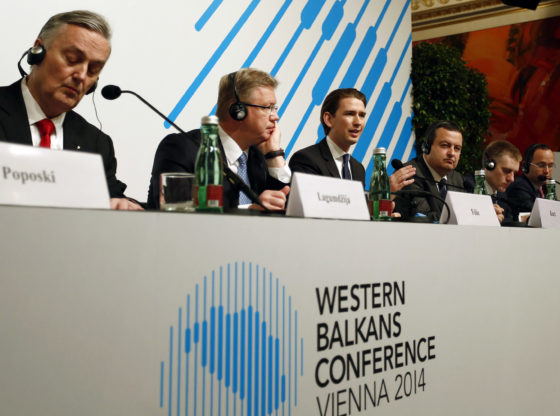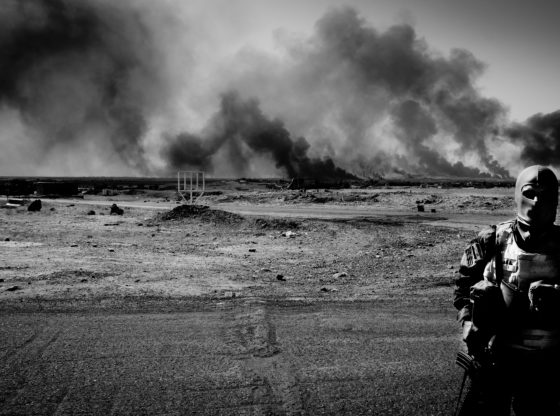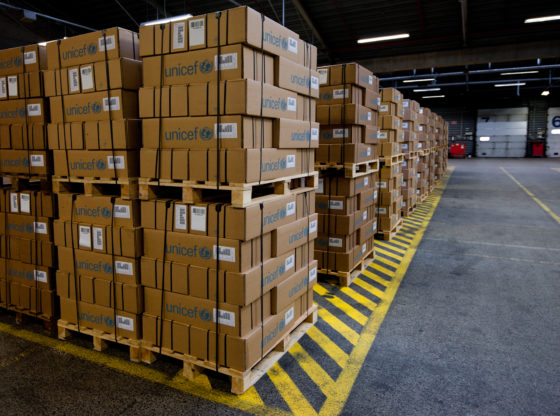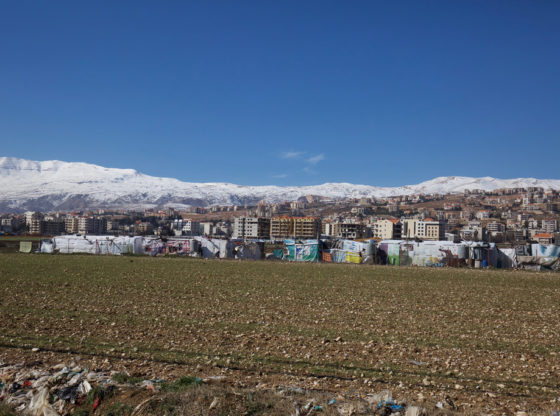Improving educational opportunities for girls in poorer and rural communities is crucial to the economic and social progress of developing nations. Caroline McKay illuminates some of the key issues and examines whether current solutions are bringing about meaningful change.
It’s 4am. You must rise to collect water and tend to three younger siblings before making the arduous and risky commute to an ill-equipped school. Here, your voice is seldom heard; boys are favoured for academic support and there are 90 students crammed into the hot and poorly lit classroom, sharing desks, sharing chairs. You’ve missed classes recently due to menstruation and the pressures of domestic duties, and are struggling to keep up.
This is a reality for millions of girls across the developing world.
There is no doubt that educating girls well offers an escape from some of the world’s greatest problems; from poverty, unchecked population growth and unsustainable livelihoods, to child and maternal mortality. Investment in high-quality girls’ education has been shown to have transformational social, health, and economic benefits, empowering many others in rural communities. The children of mothers who can read are 50% more likely to live beyond the age of 5, and girls who complete their secondary education tend to marry later and bear fewer children, reducing population pressures, disease rates, and boosting livelihood development.
The children of mothers who can read are 50% more likely to live beyond the age of 5, and girls who complete their secondary education tend to marry later and bear fewer children, reducing population pressures, disease rates, and boosting livelihood development.
Yet, despite some progress, the world failed to meet the Millennium Development Goal of achieving universal primary education by 2015. Access to schools did improve but quality was reduced, meaning that children were attending school but not learning. Now sights are set on the Sustainable Development Goals set in 2015 for education, for all girls and boys to complete free primary and secondary quality schooling by 2030. Encouragingly, primary enrolment and completion in developing countries now exceeds 90%, and a focus on actual learning is more prioritised. However, completion rates for secondary school lag behind at a meagre 14%, rendering the goal seemingly unattainable by 2030 unless transformational change is instigated now. Simultaneously, funding to education has decreased. A UNESCO policy paper on aid shows that for the sixth year in a row, the share of aid going to education has dropped, and while total development aid increased by 24% since 2010, aid to education decreased by 4% in the same period.
SPOTLIGHT ON RURAL ETHIOPIA
Rural sub-Saharan Africa is one of the toughest places on earth to be an adolescent girl. Wolaita Zone, for example, a densely-populated region of Ethiopia 330km southwest of Addis Ababa, is crippled by extreme poverty. Road networks are rugged, barely connecting vast rural swathes of the Rift Valley. Few homes or schools have electricity and HIV/AIDS is common. Wolaita’s school system delivers alarmingly low quality education and support for girls. They encounter discrimination and competing challenges from early in their lives, from hours of daily chores to support their families – such as water collection to cooking and caring for those in ill health – to inadequate sanitary protection and the prioritisation of boys’ learning. Early marriage is common in Wolaita. Marrying girls young is deemed a smart economic transaction for poor parents, who have one less child to support. However, child brides have little or no access to health support, are at greater risk of disease and often suffer terrible complications from childbirth. Ultimately it perpetuates the poverty cycle and gender inequalities, with most girls dropping out of school and lacking the skills to seize opportunities outwith the domestic sphere.
Schools are overcrowded – class sizes of 100 children are common – and often unsafe, with substandard sanitation facilities, and teaching. Gender parity in these remote schools is equally poor, with boys often favoured for support in class and girls left without the tuition they need to develop literacy, numeracy, and skills for life. They don’t have private space for dealing with menstruation and regularly face harassment and school-related gender-based violence. Coupled with unsupportive societal norms, this results in very poor attendance and academic performance for girls’ in Wolaita compared to boys. Aggravating the issue of low quality primary schooling in Ethiopia is the critical shortage of secondary schools; there are just 2,000 for a vast population of 93 million people. Most are situated in towns or cities so distances are often too great for girls living rurally to travel safely. In one Wolaita district, Damot Woide, the nearest secondary school is 18km from the primary school. Girls often face sexual harassment on their commutes or whilst boarding in low-cost accommodation in their local town.
FINDING SUSTAINABLE SOLUTIONS
Research published by the International Initiative for Comparative Education gives an insight into what works for improving children’s learning outcomes in low-income countries. Amongst the approaches proven to achieve impact are those that address “multiple barriers to quality education”, and there is wide accord that holistic approaches hold the key to achieving broad and sustainable change. Whilst they can effect change, holistic interventions can take years to achieve true impact. Tackling the complexity of issues holding girls back calls for approaches that are truly rooted in community participation and accountability. Involving girls and community members from an early stage and working within existing government and education structures is equally crucial, building relationships directly with district authorities and schools. In Wolaita Zone, holistic girls’ education projects have reported promising impact over the past four years, through activities such as:
- Community-based girls’ education structures, such as education advisory committees, and mother’s groups, which have fostered a culture of support for girls’ learning and development;
- Supportive groups for girls, such as girls’ education and reading clubs, which have helped them catch up on missed learning and gain self-confidence;
- Provision of reusable sanitary pads and underwear have boosted menstruating girls’ attendance, and new sanitation rooms in schools provide a safe place for girls to rest and receive support;
- Training district authorities to train and mentor teachers in gender-friendly teaching practices, core subjects and language competency has achieved a step-change in the quality of schooling;
- New latrines have been constructed for girls in schools with hands-on help from community members, giving girls safe and private sanitation away from harassment.
Boys and men are also crucial agents for change. Successful interventions must cultivate increased family and community support for girls’ education through direct engagement and awareness-raising with brothers, fathers, and sons, who are important changemakers. Activations like ‘good brother’ awards for boys who support girls, father’s groups, and celebration in schools of positive male role models have all been shown to make a difference towards the progression of girls’ education in rural communities.
IMPACT FOR ALL
Huge further investment is needed towards the delivery of targeted, holistic, and community-rooted school improvement and support programmes, if we are to achieve Sustainable Development Goal ambitions. In recent years we have seen heightened global profile of the intersecting issues of girls’ education, health, and poverty, highlighting the power of education for fighting some of the world’s toughest problems. Since 2013, The Department of International Development (DfID) has run a major funding programme for girls’ education in developing countries, and is now funding secondary transition work through the Girls’ Education Challenge Transition fund. Michelle Obama initiated the global ‘Let Girls Learn’ projects. The United Nations is also investing. The UN Foundation’s adolescent girl campaign, ‘Girl Up’, leads projects encouraging hard-to-reach girls to take action in their communities. More coalitions have been initiated; The Partnership to Strengthen Innovation and Practice in Secondary Education (PSIPSE) has brought together major global funders such as Dubai Cares, The Mastercard Foundation, and The McArthur Foundation to support secondary education in Africa and India.
On a community and school level, there has been key progress. Strides forward have been achieved for equality in primary and secondary schools and, in 2014, global gender parity was achieved on average in schools. Direct and significant gains in girls’ learning outcomes have been recorded in many of the projects funded by DfID’s Girls’ Education Challenge. In Wolaita, transformational improvement in literacy, numeracy, and attendance has been achieved, with over 62,000 girls benefiting. Positive impacts aren’t confined to girls. Illiterate and uneducated mothers have ventured back to school with their daughters and sons, highlighting an authentic evolution in communities’ acceptance of the importance of education, and willingness to adjust traditional cultural practices to support change. One parent declared: “I used to crave to see her married and have children. Now I desire her to continue her studies.” A senior girl supported through the project spoke of her inspiration in “seeing people who attained high status through education.” Boys have also been supportive, with one noting the visible behavioural change: “A girl never sat at the same table with boys in the past. Now she feels equal and does not feel ashamed about her sex.”
Only 11% of poor rural girls complete primary school compared to 85% of rich urban boys.
However, even with key institutions investing and NGOs building capacity on the ground, change is a slow process, and still a work in progress in many countries. Tragically, global development aid for education is actually lower today than it was in 2009. There are far too many places around the world where it is still difficult to be a girl, with the poorest girls still more likely to drop out of school early or even never attend. The gender parity statistics are based on averages and tend to mask a continuing disparity in particular regions and countries. Gender parity across sub-Saharan Africa has made significant progress at primary level - from 0.67 in 2000 to 0.94 in 2014 in rural areas - but gender relationships remain unequal, with deeply entrenched attitudes about the role and status of women, and there is still a clear gap in favour of boys. Only 11% of poor rural girls complete primary school compared to 85% of rich urban boys.
In the secondary education arena, completion rates may still be extremely poor in the developing world, at 14%, yet encouraging literacy gains have been achieved globally in young people aged 15-24, from 83% in 1990 to 91% in 2015, and the gap between young women and men is narrowing. But still, as age and grade increase, girls’ performance next to boys across almost all indicators such as attendance and achievement in maths and science drops starkly. Again, rural children are most at risk. In Nigeria, only 3% of poor rural young women completed lower secondary school in 2013 as compared with 17% of poor rural young men. Like teenage girls in Wolaita, we have a long and challenging journey to make, collectively, to achieve change by 2030, and it is incumbent on the western world and developed countries to continue and re-double efforts.
Caroline McKay is Development Manager for Link Community Development International (LCDI), responsible for growing funding to support LCDI’s core work and priority projects in sub-Saharan Africa. LCDI is a grassroots international development charity, based in Edinburgh and working in Ethiopia, Uganda, Malawi, Ghana and Rwanda to solve critical education challenges as a tool to help communities escape poverty. For further information on LCDI’s work please contact Caroline through [email protected] or Dr Samantha Ross, International Programme Director through [email protected]. Several short films on our Wolaita Zone girls’ education project can be found here and the full endline results here. Please consider signing up to become a Friend of Link and support our projects across Africa
Featured photo: Girls in class in a school supported by LCDI, Wolaita Zone, Ethiopia, 2015. All rights reserved.










